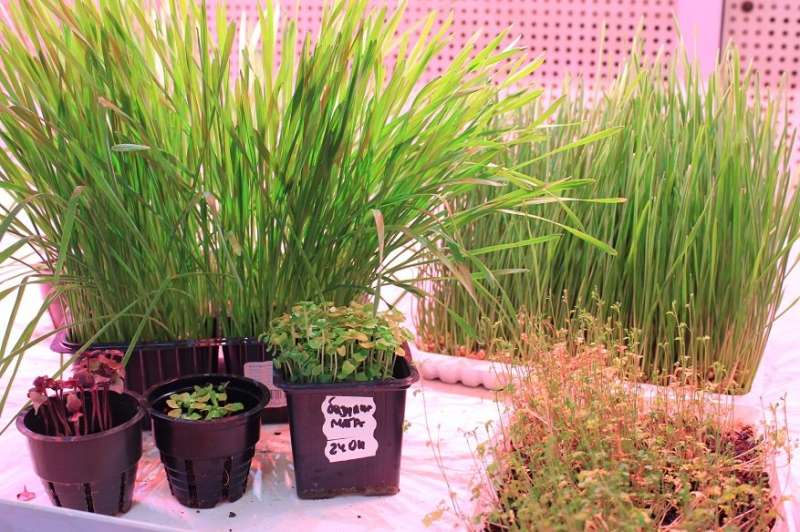Plants samples cultivated in the TPU phytotron. Credit: Tomsk Polytechnic University
Researchers from Tomsk Polytechnic University (TPU) are implementing a large-scale interdisciplinary project to develop an innovative autonomous greenhouse. The project will incorporate multiple technologies including phytotrons, ceramic emitters, spectroscopic techniques, automated control systems, and others.
The project is supervised by Dr. Damir Valiev, the assistant at the Division of Materials Science of the TPU School of Advanced Manufacturing Technologies. According to Valiev, new polycrystalline luminescent materials are promising for lighting engineering. Their advantages include higher efficiency of converting UV radiation into visible light, and high thermal characteristics to ensure long service life of solid-state light sources.
The scientists will also improve express testing of plant growth. They are will develop monitoring solutions for the plants in conditions created for growth. The project also includes phytotrons that adjust the optimal spectral composition of light, taking into account biological features of species and cultivated variety of plants.
"The polygon consists of three units. About 50 percent of the area will be occupied with planting. In the beginning, we will cultivate cucumbers. Then there is a research unit where we will study radiation modes for plant growing. Here the fundamental part of the research will be carried out. In addition, a robotic system and radiation modes will be tested there, and drones will pollinate plants. The third unit is assigned to supporting services," said Valiev.
According to the TPU scientists, this project might be applied in northern areas and in the Arctic. "This is a pilot project, and we are going to translate it to regions with extreme operating conditions. Our possible counterparts supply 'smart' greenhouses to adapted to the climate of the European part of Russia and work with ready-made solutions without involving research," added Dr. Valiev.
Provided by Tomsk Polytechnic University























